FORT SHAFTER - Members of the 7th Engineer Dive Team (EDT) restored and rehabilitated a coral reef off Kwajalein Atoll.
The thirteen members returned, Oct. 6, from a 27-day mission to fix a coral reef that was damaged by a routine underwater bomb detonation.
"Kwajalein was a strategic point during World War II, and it is still used for missile testing and other operations," said Staff Sgt. Bryan Haldeman, diving supervisor, 7th EDT. "As part of an upgrade project, a fiber optic cable was going to be put into place in order to improve Internet connectivity throughout the island."
When the workers were drilling into the coral for placement of the cable, they found a 500-pound bomb and several 5-inch shells from World War II.
Kwajalein Range Services\' (KRS) environmental department contacted the 7th EDT to detonate the bomb, but since the dive team is not an explosive ordnance detonation (EOD) unit, they would have only been qualified to place a charge on the bomb and blow it in place. Due to environmental concerns, this was not possible.
A Navy EOD unit was selected to detonate and dispose of the munitions. The Navy unit moved the bomb from the main point in the reef to a more desolate, less dense coral field to discharge the bomb.
Despite efforts to isolate the discharge as much as possible, there were several broken pieces of coral and debris left on the ocean floor. This caused a new problem as broken coral washes around with the tidal flow, threatening the surrounding live coral.
KRS contacted the 7th EDT again, but this time to restore and rehabilitate the reef.
In order to prepare for the mission, the 7th EDT conducted buoyancy compensator and lift bag training at Coconut Island in Kaneohe Bay.
"Buoyancy training is important because when we work on a coral reef, we can't stand on the ocean floor," Haldeman said. "We needed to be hovering over the (reef) while restoring (it)."
For the buoyancy training, the divers built containing cages to collect and move the coral. They attached bags to the cages, took the cages down to the bottom and neutralized them, and then swam around to get used to adjusting the buoyancy. Once the divers got comfortable with the empty containers, they put a 100-pound weight inside the cage to simulate the weight of several pieces of coral.
"The lift bag is something that throws a lot of guys off because of the difficulty with buoyancy," Haldeman said. "A lot of times cages go floating to the surface because (the team) is not compensating enough ... (our) divers were all real competent on that. I was really glad they got this kind of training this early in their career."
The dive team arrived on Kwajalein, Sept. 10, and met with their Army sponsors and National Oceanic and Atmospheric Administration (NOAA) officials. The team began its reef restoration mission by laying down lines and piles of coral debris along the ocean floor. To protect the reef from further damage, the divers then shifted the piles to a larger holding area, where they later separated the good coral from the bad coral. When that was completed, they cemented the live coral back into the reef to help rehabilitate the area.
"We scraped a biofilm off the live coral, and then we scraped a biofilm off the area of the reef where we plan to place the coral," Haldeman said. "We then sent buckets down with concrete, and we cemented the good coral into place."
The divers completed two dives a day, ranging from 18-60 feet during this mission. For six of the team members, this was their first diving operation.
"This was a decent first mission; I think I was kind of spoiled getting to dive a beautiful island right out of school," said Pfc. Andrew Damon, diver second class, 7th EDT. "My favorite part was the coral relocation and getting to work with the environmental guys. It was great to see how they worked, compared to how we work."
In addition to the reef restoration, KRS asked the dive team to inspect two piers, Echo pier on the Island of Kwajalein and the Fuel pier on the Island of Roi. Members of the 7th EDT provided information on where the piers stand, how they can be repaired, and a timeline for repair.
This was not the first time the 7th EDT worked in Kwajalein. In July 2006, they imploded a 75-room building known as the Pacific Bachelor Quarters, which was originally built in 1952. It was the first time on record that the Army used a controlled and precision blast to take down a specific building, leaving everything else around it intact.
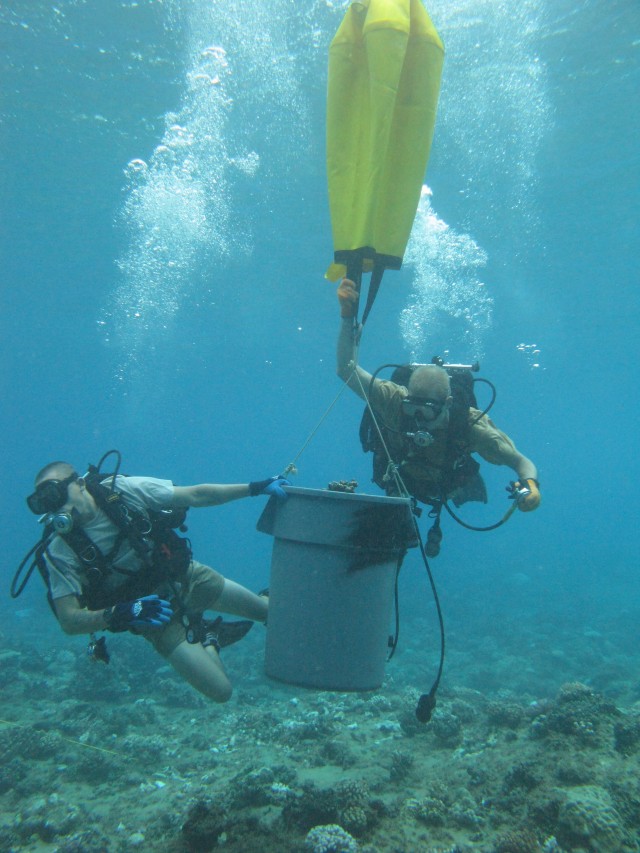
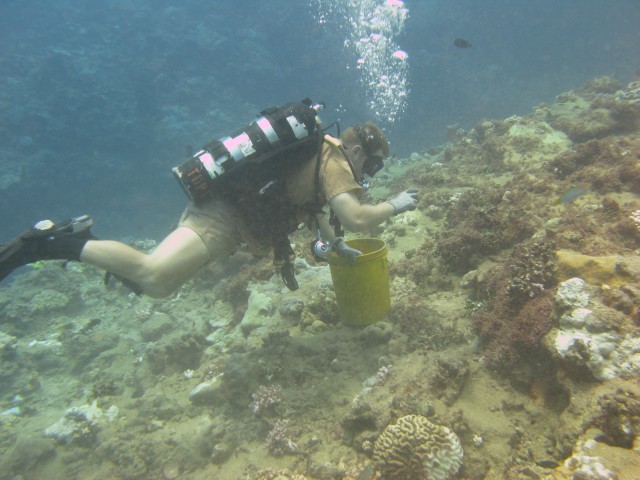
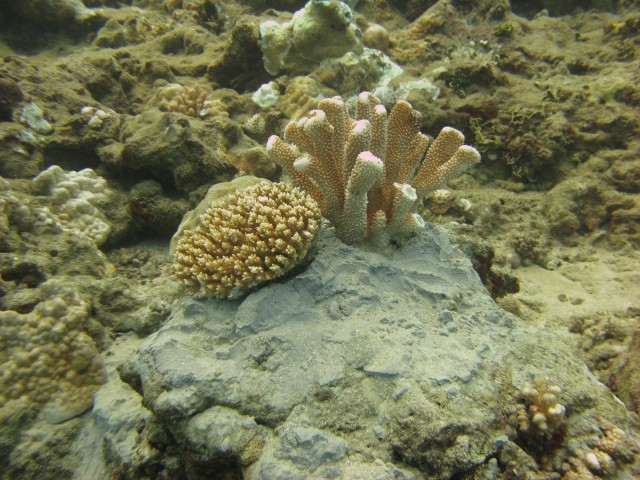
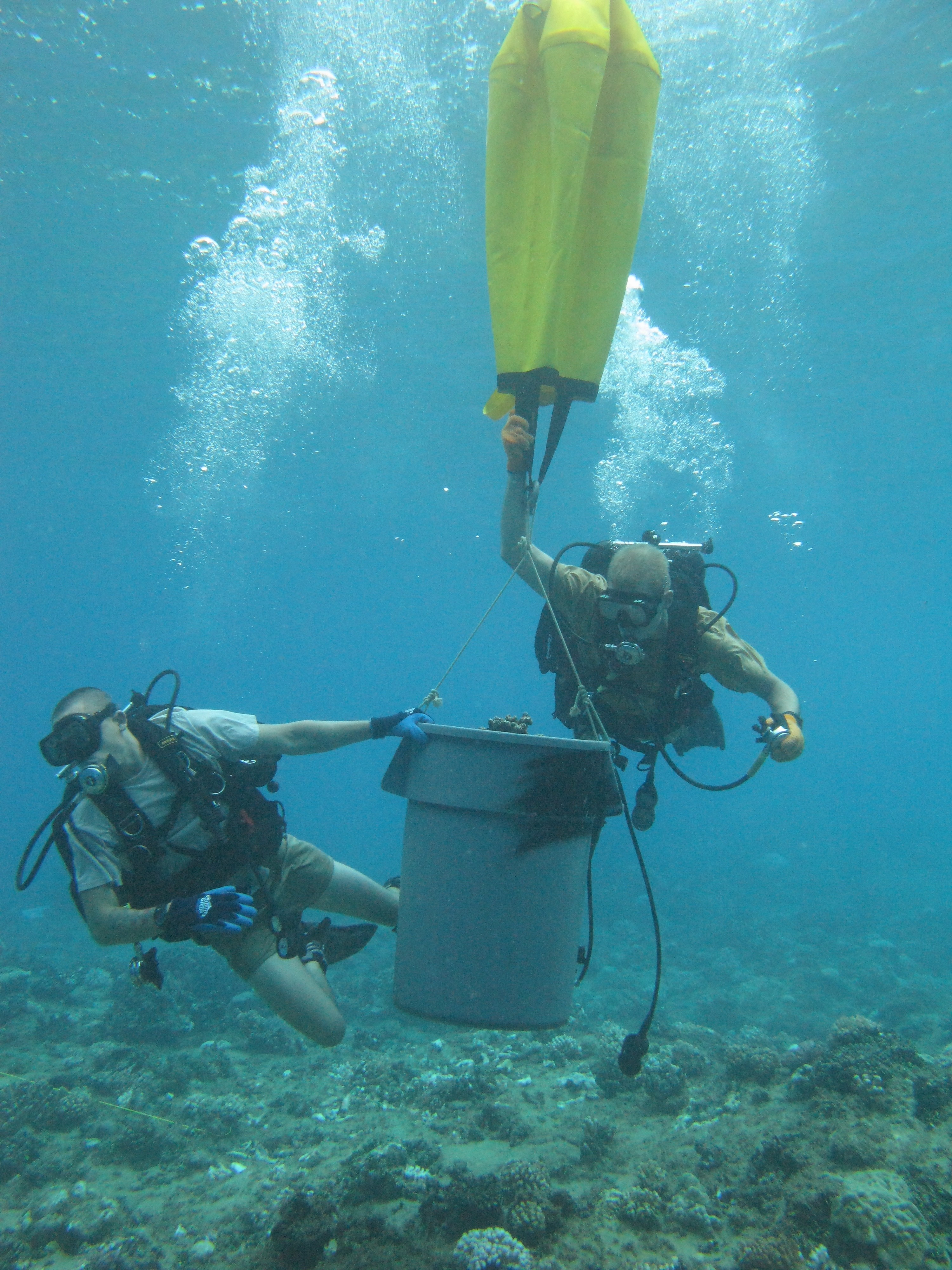
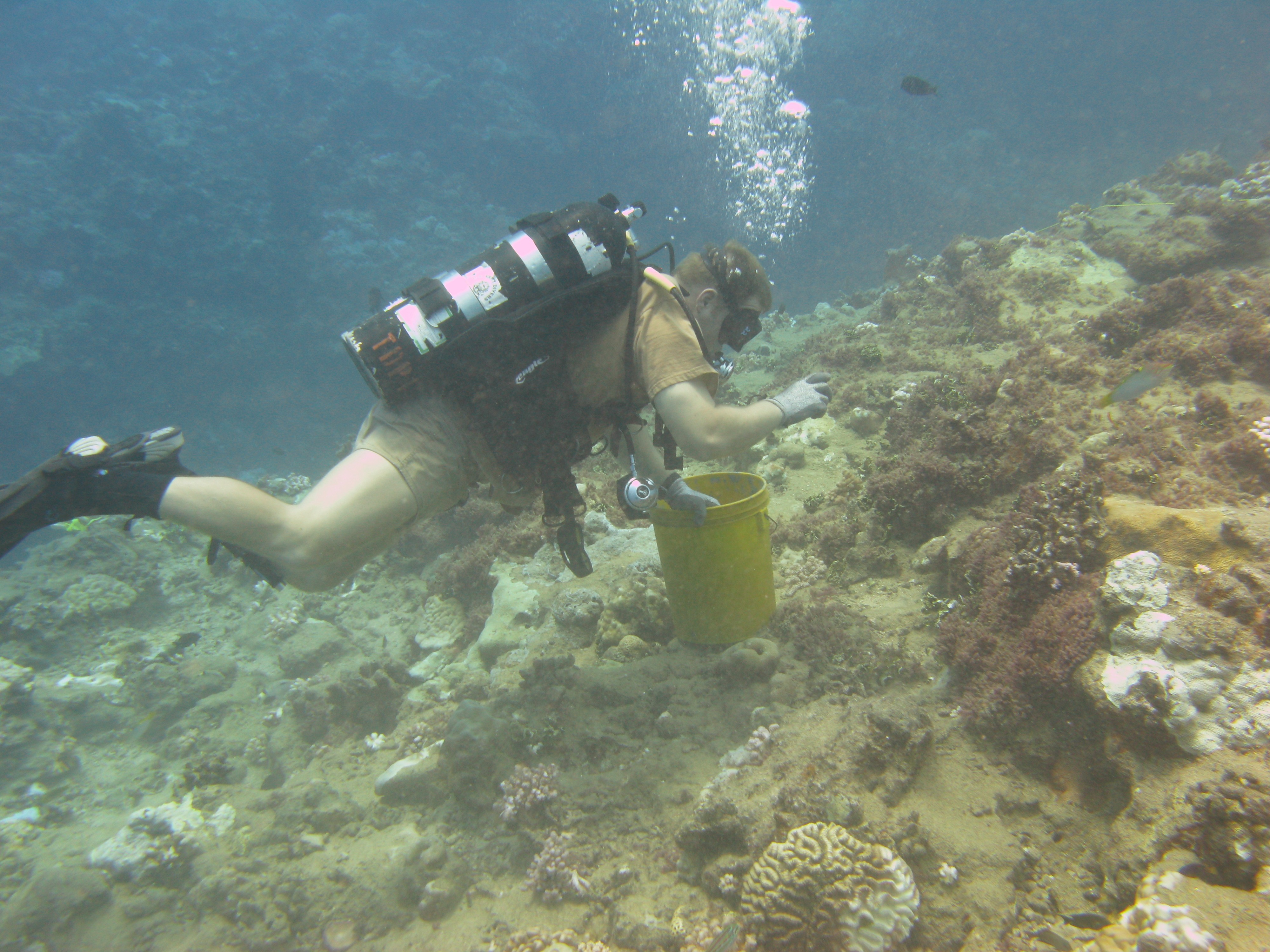

Social Sharing